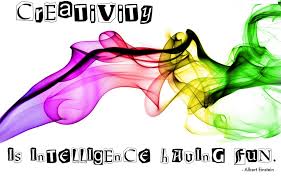F4: Full Attention to the Fundamentals of Family and Faith

February 19, 2016 | Posted in Leading Hartfully, Living Hartfully | By Gaia Hart
Your faith and your family can pull you through most anything at all. The strength of your aspirations is based on the solid foundation of these two factors. It’s not necessarily about religion, but the true spirit of the goodness in people and the faith that there is kindness, love, spirituality, and caring in the world. Family isn’t always blood relations either; rather it is the people who trust, love, and support you in a united group.
Are you providing full attention to your faith and your family? How you spend your time is a telltale sign. Where our intention goes, our energy flows. If we state that our family comes first, yet we are spending 80 hours per week at the office, then we need to refocus our attention. What have you done lately to show your family or your faith that they have your attention?
Do you have special rituals with your spouse, kids, parents, or siblings that mark certain dates or commemorate specific milestones? Are there certain times you make phone calls or other ways that you show each other you care that are special between you? Creating these connections keeps your attention focused in the right areas and energizes you and the people around you.
Inspiration and Incentives that Work to Improve Work

February 4, 2016 | Posted in Leading Hartfully, Living Hartfully | By Gaia Hart
According to CCH, Inc. – an HR research firm, the Unscheduled Absence Survey found the number of employees missing work for personal reasons has increased to 21% from 11% last year. Of the 333 human resources executives surveyed, personal illness was cited 33%, with 67% absent due to personal reasons resulting in a cost of $789 million.
The study found that an increase in morale significantly lowers the number of absentees. Organizations with good overall morale has a 1.9% absentee rate while others averaged 2.4%. The more options employees have, the better the morale and the lower the absentee rate. Two of the major things to do this are provide more flexible time off and offer more work/life programs such as childcare, working from home or compressed work weeks.
The top four most cited incentives to keep workers working for you according to a survey of 352 employers by the American Management Association:
- Sending employees to conferences and training
- Tuition reimbursement
- Skills training
- Pay for performance
A “new” way to recognize employees: ask them to participate in an important project they might not otherwise work on. Using involvement to reward workers tells them that you value their performance and it provides you with a pool of creative thinkers.
Beat the turnover odds: in the fast food industry with turnover rates close to 100%, one owner explains his staff longevity of 8-10 years at a Chick-Fil-A is due to his treating them like customers and greeting them daily, talking to them throughout the day, and saying good-bye when they leave. Talking to them -what a concept!
When the economic times are tough – it’s time to energize employees and make sure you hold on to your top talent. Here are some hints to keep them around:
* Celebrate all the victories, no matter how small
* Look for other incentives besides money – ask them
* Consider changing some work hours – be flexible
* Take more time for personal connections at work
* Don’t focus on the negatives, keep the talk positive
* If business is slow – take the time to do foundational things and create new programs or write personal
notes to staff thanking them for their work – do the things that you normally wouldn’t have time to do
* Keep networking in your industry – invite a colleague
* Create a terrific atmosphere in the break room or the bathrooms to make people feel as if they matter – take care of your team by taking care of their space
Humor and Laughter as Stress Busters

January 4, 2016 | Posted in Leading Hartfully, Living Hartfully | By Gaia Hart
As a Certified Laughter Leader for over a decade; I feel the need to share some resources and statistics with you on the benefits of laughter at home and in the workplace to help reduce stress. Just 20-30 minutes per session of the laugh exercises help reduce stress, diminish social isolation, and improve general well-being. It’s a hoot and it’s a hit!
The Association for Applied and Therapeutic Humor: www.aath.org is a big proponent of laughter, humor in your life and the benefits of Laughter Clubs and just plain laughter. Many members are in the healthcare field and who bring humor and healing together in different environments. Others of us were speakers and facilitators who help bring humor to life and to businesses to help people deal with stress or change, or tragedy.
The organization is a leader in the scientific side of the benefits of laughter and humor. AATH is the expert resource center for research on what we all know to be true – that laughter is the best medicine and that humor helps us cope with life. In these times of change, trauma, and trepidation about the economy, it is imperative that we keep our sense of humor about what’s important and also be aware of how others may deal with these uncertainties. The morale may be on shaky ground at your organization and you may be just the catalyst that is needed to help get things back on track and one way may be to start a Laughter Club.
* Nearly 2/3 of workers experiences some level of stress at work. 50% are somewhat stressed, while an additional 13% feel extremely stressed at work and only 9% feel that they are under no stress at all at work.
* Too much work (38%) and too little time (59%) are the two most common causes of stress in the workplace.
* Fatigue is the most frequently mentioned result of work-related stress that spills over into the lives of those surveyed 67%. Nearly 50% report that impatience and moodiness caused by work also has a negative impact on their lives at home.
These statistics were reported by a survey of American workers at Careerbuilder. What are you doing at work to prevent yourself and your colleagues from becoming statistics?
Exercise Your Empathy and Compassion as Leaders

December 19, 2015 | Posted in Leading Hartfully, Living Hartfully | By Gaia Hart
Research from the neuroscience field has demonstrated that we’re actually hard-wired to empathize with those around us, thanks to a neural network called mirror neurons. We see it when we hear of natural disasters, which causes a deep emotional response. Our empathy makes it so that we can’t help but feel concern and care for those we don’t even know. Not to be confused with sympathy. I watched a stirring, animated short video on Youtube regarding empathy with a little fox. Check it out. One of the points to the video was that when you make an empathetic statement, it should not start with “At least….). Oh how that resonated with me. How often do we mention something to a colleague that did not go well and they being their response with “At least it didn’t….” Responses like this don’t help and don’t solve the issue, they just annoy you.
Though we are hardwired for empathy, we don’t see evidence of this behavior in the workplace. It seems too mushy. Why are so many workplaces suffering from a lack of human compassion, connection, and shared belonging? We care about the realities our colleagues face in our organization – of the challenges and opportunities they see going unaddressed and thus, our compassion arises from our curiosity to listen and learn, paired with our innate drive to relate to the realities of those around us.
This type of compassion is vital in today’s leadership because it’s the key to the internal driving force found within each us to understand what motivates our employees, what matters to them, and how we can connect the work they do to the shared purpose that defines why we do what we do. Many studies have shown that compassion in the workplace leads to higher levels of employee engagement and job satisfaction and reduces employee absenteeism and burnout. The Gallup organization’s major study asks employees if they have somebody they can call a best friend at work and if they have been asked about how they contribute to the organization and shown by their leadership that what they do matters. If they don’t feel they matter, they walk.
Here are some steps to help you to reconnect with your sense of curiosity and empathy to bring more compassion into the workplace:
- See your team mates beyond the roles they play in your organization and remain curious about what challenges them along with the willingness to listen to what opportunities they see for our organization to succeed.
- Make efforts to discover their true strengths by seeking to better understand and know those we lead – of what serves as the fuel for their internal motivation.
- Be open about not having all the answers because it’s impossible for anyone to truly know or understand the complexities of the work we do today and its impact.
Most of the daily decisions we make are not driven from a rational mindset, but from a response to our emotionally-driven, network of mirror neurons where we seek commonality and connection both to the work we do and to those around us. And that means that compassion in leadership involves an honest and more outward-focused approach to leadership that allows us to tap into the native talents, creativity, and insights of those we lead. Leaders must show their team members that they are present to hear, understand, and provide them with what they require to succeed and thrive. How will you show compassion and empathy to your colleagues, clients or customer today?
Back: Back Up Important Plans, Documents, and Data

December 4, 2015 | Posted in Leading Hartfully, Living Hartfully | By Gaia Hart
Free yourself from the stress and worry over losing your hard work, your critical information, or your well-crafted plans. Create systems and methods to save yourself from accidents such as fire, flood, earthquakes, computer crashes, power surges, theft, unexpected emergencies, famine, or locusts.
Worrying about the possibilities of such loss or worse, after such a loss actually happens creates great stress and angst. Creating a back-up plan or strategy for saving your stuff creates an insurance policy and peace of mind. Have a fire-proof box at home, a safe deposit box off site with valuable documents or computer flash drives containing back up data and important information. You could ask a family member to keep copies of important documents and have a will and an estate plan in place in case of unforeseen circumstances.
Having a Plan B for major decisions just in case will free your energies to be put to better uses. What are your back-up plans for emergency contacts, travel situations, car accidents, natural disasters, or power outages? Do all your family members know the plans, codes, passwords, combinations, phone numbers, or hiding places of your back-up plans?
Forward: Constant Forward Motion Keeps us Moving in a Positive Direction

November 4, 2015 | Posted in Leading Hartfully, Living Hartfully | By Gaia Hart
When we coast for too long, it means we are going downhill. So like a shark, if we quit moving forward, we cease to live effectively. Keeping our sights on the possibilities and discoveries ahead of us while enjoying our present helps keep us moving in the direction of our dreams. When we are hopeful about what lies ahead of us, we look forward to a new day.
When we are in charge of creating our future, we get excited about moving forward to greet our goals. Sometimes we may choose to move sideways as a form of moving forward – as in a lateral move in our workplace. At times the answer is not always moving up, but out that makes the most sense, but it is always moving you forward towards where you want to be.
Popular psychology suggests that we are either moving forward towards pleasure or away from pain – either way, we are making a positive move that instills energy in our actions and gives us the power and the confidence to keep moving forward. Go where your heart leads you, go for it, go take a hike, or go explore a new destination.
If you don’t go, you won’t know. Taking the attitude of taking off towards where your dreams and desires lead you helps build your confidence, build your resilience to stress, and build on your life experiences. Be bold and go to where you think you need to go in order to get what you think you need. Taking brave steps toward your goals gives you energy and courage to pursue your dreams with guts, grace, and gusto.
Interesting people, activities, places, books, ideas, information, and association with other interesting things gets you stepping a little higher. Energy and inspiration by association seem to kick-start your battery. The key to attract interesting people is to create an interesting life, become an interesting person, and seek diversity to get your engine humming. When your mind stops exploring new interests and discovering new ideas, then your soul withers and your brain stops expanding to take in new information.
So what’s new and interesting on your To Do list today? Get interested in becoming interesting and see what kinds of energy sources you tap into. If your life seems like Bill Murray’s in the movie Ground Hog Day, then it’s time to make some changes and include more interesting things to add some spice to your days so they won’t all seem like re-runs that run you down.
Stretch Your Creative Muscle

October 23, 2015 | Posted in Leading Hartfully, Living Hartfully | By Gaia Hart
Creativity is one of those things many people thing they don’t possess. They may have had it as a kid and it was “conformed out of them” in the academia and workplaces unless you chose a creative field. If you ask a room full of children if they can draw, all hands go up. If you ask a room of adults the same question, only a few hands raise. What’s the deal with that? When did we lose it? I think it’s still there, but hasn’t been exercised in a while and has become flabby.
When faced with unique conditions, I would like to think we could get creative and figure out a way just like the astronauts did when they were in trouble, or like Cheryl Strayed in her book Wild about hiking the Pacific Crest trail solo. I can relate to that after spending 30 days in the wilderness on an Outward Bound backpacking experience. Necessity is the not only the mother of invention, but I think the other child is creativity. I try to exercise my creativity daily through art, photographs, cooking, sewing, designing décor, designing training and activities, and problem solving. If I don’t get a chance to exercise my creative muscle, I get antsy and itchy to do something, anything creative.
The following are six conditions which allow creativity — and ultimately, innovation — to flourish.
Solitude. Not withdrawal or being totally alone, but in the sense of spending time apart from the clichés and conventions of society to focus on one’s own thoughts and ideas.
Inactivity. Not loafing or goofing off, but planned inactivity as a break in one’s busy routine. I’ve known people to regularly set aside part of their daily schedule so as not to be interrupted in their thoughts.
Daydreaming. Daydreaming can be focused on out of box thinking and is often connected to inactivity. In daydreams, we make mental excursions into fantasy that breed creative activity. Several organizations have quiet rooms set aside for the purpose of stimulating out-of-box thinking. Reading magazine outside your normal arena to get ideas from other industries is a fascinating way to daydream. I also find watching the house hunter home shows from around the world helps me get ideas.
Gullibility. This is the willingness to suspend one’s personal beliefs and accept what comes from inside without insisting on rationality or logic.
Alertness and discipline. Although these qualities are necessary for productivity in any endeavor, they also have a special meaning in creativity.
Mental replay. Allowing oneself to revisit past creative efforts and resolution of past traumatic conflicts leads to analogies.
While most of the conditions require loosening of control and openness to the inner self, the last and most important quality is the willingness to put whatever you discover into action. What are you going to put into action to exercise your creative muscle?
Listening on Demand in a Demanding Generation of Workers

August 23, 2015 | Posted in Leading Hartfully, Living Hartfully | By Gaia Hart
Living up to our capacity at all levels includes our communication styles and ensuring they are up to snuff. Especially with the new brand of employees now in the workforce and those entering in the coming years, Generation Z. The research shows that Millennials now have an attention span of 12 seconds living in a constant state of partial distraction. Once the workers of Generations Z enter the workforce, they bring with them an 8-second attention span living in a state of partial attention.
What that means for us as team players and leaders is that we need to hone our communication styles, our leadership styles, the way we interact with the new breed of workers in much faster paced, on-demand type of environment. These workers are used to finding answers to problems on demand in the palms of their hands on mobile devices. They may not have the answers in their heads, but they have it in their hands. Our way of giving direction must be quick and agile, our listening also needs to be honed to their brief sound-bite type of 140-character Twitter-type of quips. No long conversations expected.
Solid relationships help us gain the respect and trust of others, our clients and our colleagues. It is important to be easy to work with, to have productive working relationships. People must sense that we genuinely care about them; this is how they feel inspired to work with and even follow us and to endear that trust and inspiration, we need to behave and communicate how others needs us to in order to feel heard. After all, sharing experiences with the world and having the world hear their stories is what Millennials and Gen Z are all about – just check out Instagram, Facebook, Snapchat, Twitter and the flavor-of-the-month site to upload stories and pictures.
Here are a few helpful practices to becoming an accomplished listener:
- First, our attitude: We must commit to listen to understand and learn.
- Put the other person at ease, maybe by sitting side by side rather than across a desk.
- Lean forward, comfortable eye contact, a slight smile.
- Quiet our mind — and stay fully present!
- Give affirmations: “OK,” “I see,” “Makes sense.”
- Ask clarifying questions.
- Maybe ask if we may repeat what we’ve heard to assure we have it right.
- Use silence, don’t rush to fill the space, likely the person will then continue, and we’ll deepen our learning. It is said, “Let silence do the heavy lifting.”
- Take notes, it will help us remember, and even more important, it is a sign of respect to the other person and will be appreciated.
It all begins with our willingness to understand and learn, and our effort to be patient and fully present. Conscious listening is difficult, especially in our crazy busy world today with so many urgencies and distractions. Keep in mind that we all want our stories to be heard and try to keep your distractions at bay while you lend an ear.
